Annals of Limnology and Oceanography
Assessing Mooring Designs for Improved Acoustic Monitoring of Harbour Porpoise in the German Borkum Riffgrund, North Sea
Ian B Todd1 and Victoria LG Todd1,2*
1Ocean Science Consulting, Spott Road, Dunbar, East Lothian, EH42 1RR, Scotland, UK
2Institute of Sound and Vibration Research, University Road, Highfield, Southampton SO17 1BJ, UK
Cite this as
Todd IB, Todd VL. Assessing Mooring Designs for Improved Acoustic Monitoring of Harbour Porpoise in the German Borkum Riffgrund, North Sea. Ann Limnol Oceanogr. 2025;10(1):001-006. Available from: 10.17352/alo.000018Copyright
© 2025 Todd IB, et al. This is an open-access article distributed under the terms of the Creative Commons Attribution License, which permits unrestricted use, distribution, and reproduction in any medium, provided the original author and source are credited.This study evaluates two contrasting mooring methods for Passive Acoustic Monitoring (PAM) of harbor porpoise (Phocoena phocoena) in the German Borkum Riffgrund Special Area of Conservation (North Sea).
The first method utilized a low-profile subsurface acoustic-release buoy, while the second employed a large surface-chained buoy. Porpoises were monitored using T- and C-PODs, which are autonomous echolocation click detectors.
The experimental subsurface acoustic-release buoy yielded significantly higher-quality data compared to the surface buoy, likely due to reduced hydrodynamic drag and self-generated noise. Porpoise detection positive minutes per day were significantly higher at the experimental site, indicating superior performance of the subsurface mooring.
The study highlights the importance of mooring design in PAM studies and suggests that subsurface acoustic-release buoys are more effective for the long-term monitoring of harbor porpoises in high-noise environments. These findings have implications for the design of future PAM studies and the mitigation of underwater noise impacts on marine mammals.
Introduction
The harbor porpoise (Phocoena phocoena) is the most numerous cetacean in European waters [1], and is present in the vicinity of almost all marine industrial operations [2]. Consequently, mitigation of potential underwater noise-generating activities such as piledriving for the wind farm, bridge, harbor, Oil & Gas (O&G) offshore-platform construction, etc., is important for nearly all European Environmental Impact Assessments (EIAs). Part of these requirements includes baseline studies of the potential effects of industrial activities on porpoises which are a listed species in Annexes II and IV of the Habitats Directive [3].
Porpoises are highly vocal, and wild individuals have been recorded producing sonar-click trains on average every 12.3 s [4]. This renders porpoises easy to survey acoustically during EIAs, especially in remote offshore locations where access is difficult, and automated 24-hour data are required. Porpoise and dolphin echolocation behavior has been studied successfully using analog underwater autonomous self-contained static Passive Acoustic Monitoring (PAM) echolocation click-timing detectors called T-PODs [5-7], their digital successors C-PODs [2,8,9], and the latest version, F-PODs [10]. T/C/F-PODs are battery-powered and can record for extended periods without the need to download data.
T/C/F-POD mooring methods vary between workers, and include the use of heavy moorings with surface buoys, sub-surface acoustic releases, drifting with the tide, or suspending PODs from existing infrastructure such as platforms or marker buoys [7,11-14].
The Borkum Riffgrund (BR) is located west of the German Bight and north of the islands of Borkum and Juist (Figure 1). This area is in the diverse and highly productive North Sea ecosystem [15-17]. The region covers an area of ca. 625 km2, with water depths ranging from 10-40 m [18]. In 2008, BR was designated a Special Area of Conservation (SAC) under the European Community (EC) Directive on Conservation of Natural Habitats and of Wild Fauna and Flora, aka ‘Habitats Directive’ [3] based on its diverse substrate and habitat structures. The BR is also a Marine Protected Area (MPA) under the Oslo and Paris Convention (OSPAR) due to the density and abundance of harbor porpoises within German waters [19].
The aim of this note was to evaluate two contrasting PAM mooring methods to determine which method yielded higher-quality data and better performance in detecting porpoise echolocation clicks. To date, this is the only published study using a Fiobuoy acoustic release to monitor porpoises. This study not only provides critical insights into the mooring methods for PAM of harbor porpoises but also contributes to improving the quality of PAM recordings in industrial monitoring studies that assess the impacts of anthropogenic noise-generating activities.
Materials & methods
Two different mooring techniques were evaluated in this study. The first used a small, low-profile subsurface all-in-one marine acoustic release buoy (Fiobuoy AC100, Tasmania, Australia) and the second used a large surface, chained, 4-tonne German special marker buoy stipulated (and enforced legislatively for the study) by the German water and shipping police (Wasser-und Schifffahrtsamt, WSA). It was predicted that the acoustic-release mooring would outperform the chained surface buoy in terms of obtaining better porpoise signal-to-noise ratios.
On 2nd December 2009, in BR, 44 km NW of the isle of Borkum, Block L1-2, two T/C-POD acoustic monitoring stations were deployed prior to the arrival of the Noble George Sauvageau jack-up-drilling-rig (Figure 1). The first ‘experimental’ station was situated 70 m from the proposed location of the planned L1-2 wellhead and the second station was at a ‘control’ site 3 km from the proposed L1-2 development (Table 1). The control location was selected carefully based on the following criteria:
Sufficient distance from the rig to ensure individual porpoises were not detectable simultaneously at both locations i.e. to avoid autocorrelated datasets; based on the premise that on-axis porpoise signals are unlikely to be detected more than 300 m away from the source [20].
Sufficient distance from rig-operational sounds (excluding vessels); based on basic spherical (then cylindrical) sound spreading-loss calculations derived from our 2004 sound-level and frequency measurements of Noble Kolskaya jack-up drilling rig, formerly located 244 km (bearing of 325°) from the L1-2 in Block B4-05 [21]. Kolskaya’s highest near-field sound levels were ca. 150 dB re 1uPa2/Hz at frequencies < 10 Hz, ambient (Wenz), which is ca. 120 dB re 1uPa2/Hz at 10Hz; the control site ensured loss of the 30 dB re 1uPa2/Hz above ambient noise at these frequencies;
Local charts revealed another potential noise influence to be a shipping lane to the south at a distance of 5.8 km, thus the control’s range from the shipping lane had to be equidistant from the rig’s range to the shipping lane;
Seabed topography and water depth were the same as the drilling location, confirmed by a site survey [23,24], which also revealed no significant differences in local bottom type/fauna/flora compared to the drilling location; and,
Control also served to collect quasi-baseline data, should baseline T/CPODs be lost, accidentally trawled by fishermen, or simply fail.
A detailed description of the T-PODs and associated software, including a manual for data acquisition and analysis, can be found at http://www.chelonia.co.uk. T-POD functionality and settings are reviewed comprehensively in [7,20,25,26]. Version 1.0 C-POD (also manufactured by Chelonia), uses digital waveform characterization to select and log the time of cetacean tonal ultrasonic sounds from 120-160 kHz. In addition to T-PODs, C-PODs also log the center frequency, intensity, and bandwidth of each cetacean click. T/C-POD click-train recognition algorithms filter out non-cetacean clicks and give reliable data on the cetacean presence and echolocation behavior. All devices were new and pre-calibrated by Chelonia prior to deployment.
At the BR control location, a 4-tonne German special marker buoy (Figure 2) was chained to the seabed with a 4.6-ton block of concrete using the WSA, LOA 48.89 m buoy-laying vessel, Gustav Meyer. The Gustav Meyer then traveled to the experimental location which was 70 m northwest of the proposed L1-2 wellhead location, and a custom-developed, low-profile, subsurface acoustic-release buoy (Fiobuoy) mooring was deployed by hand, as the experimental baseline. The experimental mooring used the same deployment configuration as the Estonian ‘stealth’ anchoring system [14], requiring only the acoustic release transducer and a long boat hook for recovery. Permit conditions stipulated the size and specifications of the control buoy and the experimental sub-surface buoy was deployed under a Research & Development (R&D) permit, and therefore was able to be smaller, lighter, lower profile, and without a surface buoy.
Experimental and control moorings were deployed for 33 days before the jack-up-rig’s arrival; however, given that jack-up installations can take a few days to maneuver into position with tugs, a 28-day period between 02/12/09 and 29/12/09 was used for analysis to ensure baseline data were not influenced by positioning activities, especially underwater noise. Water depths were 32 m at both locations, and moorings were located on a seabed of loose sandy gravel, and overlaying clay, in a heavily trawled area with deep scours.
Raw T-POD/C-POD data were processed with version 8.17 of T-POD.exe and v.1.054 of C-POD.exe train detection software respectively, the latter of which was a pre-release trial version of v.1.0 improved on performance with false positives, false negatives, and species discrimination. For T-POD data, only ‘Cet Hi’ (cetacean high)/porpoise-like trains were analyzed. C-POD data were processed separately for Narrow-Band High Frequency (NBHF) click trains, considered as harbor porpoise, to minimize the number of false positive detections.
To compare porpoise activity between experimental and control sites, each T/C-POD dataset was analyzed for the number of Detection Positive Minutes per Day (DPM d-1) in which a porpoise click train was detected. A day is a standard 24-hour period, and a minute is classified as ‘detection positive’ if it contains any identified porpoise click train(s).
Statistical tests were performed using SigmaStat v.3.1 (Systat Software Inc., CA, USA). All train datasets were non-normally distributed (Kolmogorov–Smirnov tests, p<, 0.05), and logarithmic and arcsine transformations failed to normalize the data. Non-parametric Mann-Whitney Rank Sum tests and Kruskal–Wallis, one-way ANOVAs, with the appropriate post hoc tests, were therefore employed to assess significant differences for the indicators of porpoise activity. Spearman Rank Order correlations were undertaken to test for patterns in the POD dataset. Data from each T or C-POD were analyzed separately.
Results
All four deployed T/C-PODs were recovered successfully. Experimental PODs T-407 and C-827 provided excellent datasets; control PODs T-408 and C-828 yielded poor datasets, with both devices’ memory often saturated by mooring self-noise. Experimental C-827 outperformed experimental T-407 in terms of porpoise detection capability, but the performance of both control PODs T-408 and C-828 was similar and poor.
Porpoises were detected throughout the entire baseline period at both experimental and control locations. The pattern of DPM d-1 for all T/C-PODs at both locations was similar (Figure 3); however, DPM d-1 for both T-C/PODs at the control locations was considerably lower (and similar in magnitude), than at the experimental location (Figure 4).
DPM d-1 for T/C-PODs at the experimental locations was significantly higher than at the control (Kruskal-Wallis One Way Analysis of Variance on Ranks, H = 69.417 with 3 degrees of freedom, p < 0.001). Table 2 gives post hoc Tukey tests confirming where significant differences occurred.
The experimental subsurface acoustic release Fiobuoy at BR yielded considerably higher-quality data than the 4-tonne German special marker buoy. A decrease in detections was seen for C-PODs with increasing noise in the band 20 –160 kHz, in particular for levels above 100 dB re 1μPa rms [27].
During the study, porpoises were detected by at least one POD every study day. The more sensitive C-PODs out-performed T-PODs on the quieter acoustic release buoy, but T-PODs were better at recording in higher noise levels because, unlike C-PODs, T-PODs were optimized for detection in the porpoise band and configured to filter out unwanted noise.
Discussion
While porpoise DPM d-1 was significantly higher at the experimental compared to the control location, the pattern of detections was similar, and correlated positively. This substantiates the notion that this was likely due to disparity in mooring designs, as opposed to differences in porpoise activity in the region, especially since there were negligible differences in oceanographic, seabed, and environmental conditions at both locations (distanced only 3 km apart from each other).
The control buoy was considerably more difficult to optimize than the acoustic release and required the use of a crane, which was not permissible in wave heights > 2.5 m. Suitable weather windows are sporadic during the winter, prolonging the complexity of the study, and limiting deployment opportunities. There was more drag and high-frequency noise from the large chain on the 4-tonne German special marker buoy interfered with the POD train-detection algorithm, resulting in a considerably more attenuated and less reliable data set. This aligns with findings from other high-noise environments, such as the Dogger Bank porpoise SAC study performed by [2], where subsurface deployments also outperformed surface moorings in terms of signal-to-noise ratio and detection rates, and the study described in [28] (also in the same area), which used C/F-PODs and noted that proximity to surface infrastructure increased ambient noise, reducing porpoise detection reliability. These comparisons reinforce the conclusion that subsurface acoustic-release systems are more effective in noisy, current-prone environments, especially for long-term deployments. It is also worth noting the potential artificial reef Effect and biofouling of large surface buoys in an ecological context. Surface buoys, particularly those left in situ for extended periods, often become colonized by sessile organisms such as barnacles, mussels, and algae. This biofouling creates a microhabitat that attracts mobile species—small fish, crustaceans, and other invertebrates - which in turn may draw in higher trophic predators, including harbor porpoises. This phenomenon is well-documented by [29] where porpoise presence was observed to increase around newly installed platforms within days, likely due to rapid colonization by fish and invertebrates; however, the effect was spatially limited—typically within 200 m of the structure—and did not necessarily lead to long-term increases in porpoise abundance. Consequently, while stipulated as a permit requirement for this study, the 4-tonne surface marker buoy type of mooring cannot be recommended for T/C-POD studies and should be avoided in monitoring studies of this nature.
In contrast, the experimental subsurface acoustic release buoy configuration was versatile, easy to release and retrieve by hand, could be deployed in a range of conditions, and consequently could be used potentially on a range of vessels. The low-profile acoustic-release Fiobuoy mooring clearly created less hydrodynamic drag and self-generated noise and yielded data sets of extremely high quality. Moreover, PODs on the acoustic-release buoy were situated optimally in the water column with an omnidirectional and unobstructed ‘acoustic view’ of porpoise signals in the immediate vicinity.
It is worth discussing the shortcomings of short, industrial monitoring studies, as opposed to long-term, controlled, and replicated studies, the latter of which are extremely rare in non-academic studies. The use of only two monitoring stations over a 28-day period presents certain limitations in terms of temporospatial coverage, as well as potential data bias. A restricted spatial coverage may lead to gaps in representation, failing to capture variations in porpoise activity across the broader study area. Similarly, the 28-day timeframe may not account for temporal shifts in porpoise behavior influenced by seasonal patterns or fluctuating environmental conditions. Furthermore, the positioning of monitoring stations could introduce bias if the selected sites do not adequately represent the variability of the study region. For example, differences in porpoise activity between the chosen locations may skew overall results.
Despite these limitations, the dataset collected exhibited sufficient representativeness due to several mitigating measures. Site selection was conducted cautiously, with the control location positioned to avoid autocorrelated datasets while maintaining similar seabed topography and depth as the experimental site. This approach ensured reliable comparisons and helped minimize external variables such as operational sounds from rig activities. Additionally, quasi-baseline data derived from the control site further strengthened the dataset’s reliability by providing an unaffected benchmark for analysis.
To validate findings, robust statistical methodologies were employed. Non-parametric tests, including Mann-Whitney Rank Sum tests and Kruskal-Wallis one-way ANOVAs, were utilized to explore discrepancies in porpoise activity indicators. These analytical tools are particularly effective for non-normally distributed data, ensuring the statistical analysis remains both reliable and scientifically sound. Moreover, the positively correlated detection patterns observed between the experimental and control sites suggest disparities were primarily influenced by mooring designs rather than variations in porpoise activity itself. This observation substantiates the accuracy of the dataset and its alignment with previously established environmental baselines such as that shown by [2].
In conclusion, while limitations inherent to the study design existed, the carefully executed site selection, collection of quasi-baseline data, and application of rigorous statistical analysis justify the representativeness and reliability of the dataset. These measures collectively underpin the validity of the study’s findings and offer a comprehensive perspective on porpoise activity in the monitored area.
Thanks to Hanneke van den Berge (One. B. V.), Dr. Claudia Bärle, Christian Busch, Daniel Richardson. And Niels Torgau at Wintershall AG. The crew of all vessels were extremely cooperative, in particular, Eduard Noormann (WSA) and Erik Boon (Noble); Eric’s incredible perseverance ensured the safe retrieval of our (very expensive) acoustic-release buoy. Thanks to Dr. Nick Tregenza (Chelonia) for his considerable advice regarding the PODs in the field. Thanks to Lafarge Cement Works (Dunbar) for the provision/gas-axing of the mooring chain, and to Alien Rock (Edinburgh), for the provision of some of the mooring equipment. Finally, thanks to Helen McLaughlin (Ocean Science Consulting) for formatting and preparing the document for submission.
- Hammond PS, Macleod K, Berggren P, Borchers DL, Burt L, Cañadas A, et al. Cetacean abundance and distribution in European Atlantic shelf waters to inform conservation and management. Biol Conserv. 2013;164:107-122. Available from: https://doi.org/10.1016/j.biocon.2013.04.010
- Todd VLG, Williamson LD, Couto A, Todd IB, Clapham PJ. Effect of a new offshore gas platform on harbor porpoise in the Dogger Bank. Mar Mamm Sci. 2022;38(4):1609-1622. Available from: https://doi.org/10.1111/mms.12949
- Council of the European Communities. Council Directive 92/43/EEC of 21 May 1992 on the conservation of natural habitats and of wild fauna and flora. Off J Eur Communities. 1992;35:8-51.
- Akamatsu T, Teilmann J, Miller LA, Tougaard J, Dietz R, Wang D, et al. Comparison of echolocation behaviour between coastal and riverine porpoises. Deep Sea Res Part II Top Stud Oceanogr. 2007;54:290-297. Available from: http://dx.doi.org/10.1109/UT.2007.370755
- Koschinski S, Diederichs A, Amundin M. Click train patterns of free-ranging harbour porpoises acquired using T-PODs may be useful as indicators of their behaviour. J Cetacean Res Manag. 2008;10(2):147-155. Available from: https://doi.org/10.47536/jcrm.v10i2.649
- Carlström J, Berggren P, Tregenza NJ. Spatial and temporal impact of pingers on porpoises. Can J Fish Aquat Sci. 2009;66(1):72-82. Available from: https://doi.org/10.1139/F08-186
- Todd VLG, Pearse WD, Tregenza NC, Lepper PA, Todd IB. Diel echolocation activity of harbour porpoises (Phocoena phocoena) around North Sea offshore gas installations. ICES J Mar Sci. 2009;66(4):734-745. Available from: https://doi.org/10.1093/icesjms/fsp035
- Brookes KL, Bailey H, Thompson PM. Predictions from harbor porpoise habitat association models are confirmed by long-term passive acoustic monitoring. J Acoust Soc Am. 2013;134(3):2523-2533. Available from: https://doi.org/10.1121/1.4816577
- White E, Bull JM, White PR, Risch D. Who goes there? Evaluating the performance of a CNN for monitoring delphinid presence to that of the C-POD within diverse marine soundscapes. Proc Inst Acoust. 2024;46:1-11. Available from: http://dx.doi.org/10.25144/22218
- Cosentino M, Marcolin C, Griffiths ET, Sánchez-Camí E, Tougaard J. Dolphin and porpoise detections by the F-POD are not independent: Implications for sympatric species monitoring. JASA Express Lett. 2024;4(3):031202. Available from: https://doi.org/10.1121/10.0025304
- Bailey H, Clay G, Coates EA, Lusseau D, Senior B, Thompson PM. Using T-PODs to assess variations in the occurrence of coastal bottlenose dolphins and harbour porpoises. Aquat Conserv Mar Freshw Ecosyst. 2010;20(2):150-158. Available from: https://doi.org/10.1002/aqc.1060
- Brandt MJ, Diederichs A, Betke K, Nehls G. Responses of harbour porpoises to pile driving at the Horns Rev II offshore wind farm in the Danish North Sea. Mar Ecol Prog Ser. 2011;421:205-216. Available from: https://doi.org/10.3354/meps08986
- Brandt MJ, Hansen S, Diederichs A, Nehls G. Do man-made structures and water depth affect the diel rhythms in click recordings of harbor porpoises (Phocoena phocoena)? Mar Mamm Sci. 2014;30(3):1109-1121. Available from: https://doi.org/10.1111/mms.12112
- SAMBAH. Final report: static acoustic monitoring of the Baltic Sea harbour porpoise. 2017; 77. (Note: no public DOI; available via project websites or regional archives.)
- Zijlstra JJ. The North Sea ecosystem. In: Goodall DW, editor. Ecosystems of the world, Part 27. Elsevier; 1988.
- Zühlke R, Alvsvåg J, De Boois I, Cotter J, Ehrich S, Ford A, et al. Epibenthic diversity in the North Sea. Senckenberg Marit. 2001;31(2):269-281. Available from: https://link.springer.com/article/10.1007/BF03043036
- Callaway R, Alsvåg J, De Boois I, Cotter J, Ford A, Hinz H, et al. Diversity and community structure of epibenthic invertebrates and fish in the North Sea. ICES J Mar Sci. 2002;59(6):1199-1214. Available from: https://doi.org/10.1006/jmsc.2002.1288
- Joschko TJ, Buck BH, Gutow L, Schröder A. Colonization of an artificial hard substrate by Mytilus edulis in the German Bight. Mar Biol Res. 2008;4(5):350-360. Available from: https://doi.org/10.1080/17451000801947043
- Hoyt E. Watching whales and dolphins in Japan, Hong Kong, Taiwan and Korea. Bath: Whale and Dolphin Conservation Society (WDCS) and International Fund for Animal Welfare (IFAW); 2005.
- Tougaard J, Poulsen LR, Amundin M, Larsen F, Hansen JR, Teilmann J. Detection function of T-PODs and estimation of porpoise densities. In: Proceedings of the workshop Static acoustic monitoring of cetaceans held at the 20th annual meeting of the European Cetacean Society; 2006 Apr; Gdynia, Poland. ECS Newsletter No. 46 (Special Issue). Available from: https://www.researchgate.net/publication/236115731
- Todd VLG, Lepper PA, Todd IB. Do porpoises target offshore installations as feeding stations? In: Improving Environmental Performance: A Challenge for the Oil Industry. Proceedings of the International Association of Drilling Contractors; 2007 Apr 3–4; Amsterdam, Netherlands. 60 p. Available from: https://www.semanticscholar.org/paper/Do-harbour-porpoises-target-offshore-installations-Todd-Lepper/da180acb2e1f70f9663b79b17851d096f624066a
- Todd VLG, Williamson LD, Jiang J, Cox SE, Todd IB, Ruffert M. Proximate underwater soundscape of a North Sea offshore petroleum-exploration jack-up drilling-rig in the Dogger Bank. J Acoust Soc Am. 2020;148(6):3971-3999. Available from: https://doi.org/10.1121/10.0002958
- Deep Ocean B.V. Geophysical and geotechnical survey block L1, proposed well L1-2, German continental shelf of the North Sea. Site survey report. Den Helder: Deep Ocean; 2009;105.
- Kaag NHBM. Voruntersuchung Explorationsbohrung L1-2 im SCI Borkum-Riffgrund. IMARES Report C063/09. Institute for Marine Resources and Ecosystem Studies (IMARES); 2009;41.
- Thomsen F, Van Elk C, Brock V, Piper W. On the performance of automated porpoise-click-detectors in experiments with captive harbor porpoises (Phocoena phocoena) (L). J Acoust Soc Am. 2005;118(1):37-40. Available from: https://doi.org/10.1121/1.1937347
- Kyhn LA, Tougaard J, Teilmann J, Wahlberg M, Jørgensen PB, Bech NI. Harbour porpoise (Phocoena phocoena) static acoustic monitoring: laboratory detection thresholds of T-PODs are reflected in field sensitivity. J Mar Biol Assoc U.K. 2008;88(Spec Issue 6):1085-1091. Available from: https://doi.org/10.1017/S0025315408000416
- Clausen KT, Tougaard J, Carstensen J, Delefosse M, Teilmann J. Noise affects porpoise click detections – the magnitude of the effect depends on logger type and detection filter settings. Bioacoustics. 2019;28(5):443-458. Available from: https://doi.org/10.1080/09524622.2018.1477071
- Bolgan M, Bhalla SJ, Todd IB, Todd VLG. Soundscape and fish passive acoustic monitoring around a North Sea gas-production platform in the Dogger Bank. PLoS ONE. 2025;20:e0319536. Available from: https://doi.org/10.1371/journal.pone.0319536
- Todd VLG, Warley JC, Williamson LD, Todd IB. Acoustic activity of harbour porpoise around an offshore oil and gas platform. In: Popper AN, Sisneros J, Hawkins AD, Thomsen F, editors. The Effects of Noise on Aquatic Life. Cham: Springer; 2024. Available from: https://doi.org/10.1007/978-3-031-10417-6_165-1
Article Alerts
Subscribe to our articles alerts and stay tuned.
 This work is licensed under a Creative Commons Attribution 4.0 International License.
This work is licensed under a Creative Commons Attribution 4.0 International License.
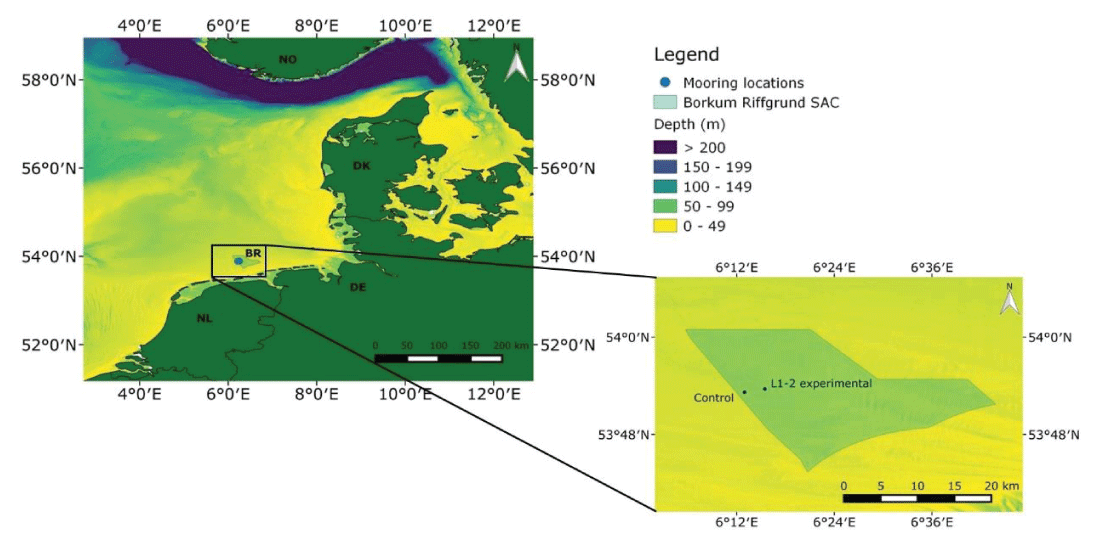
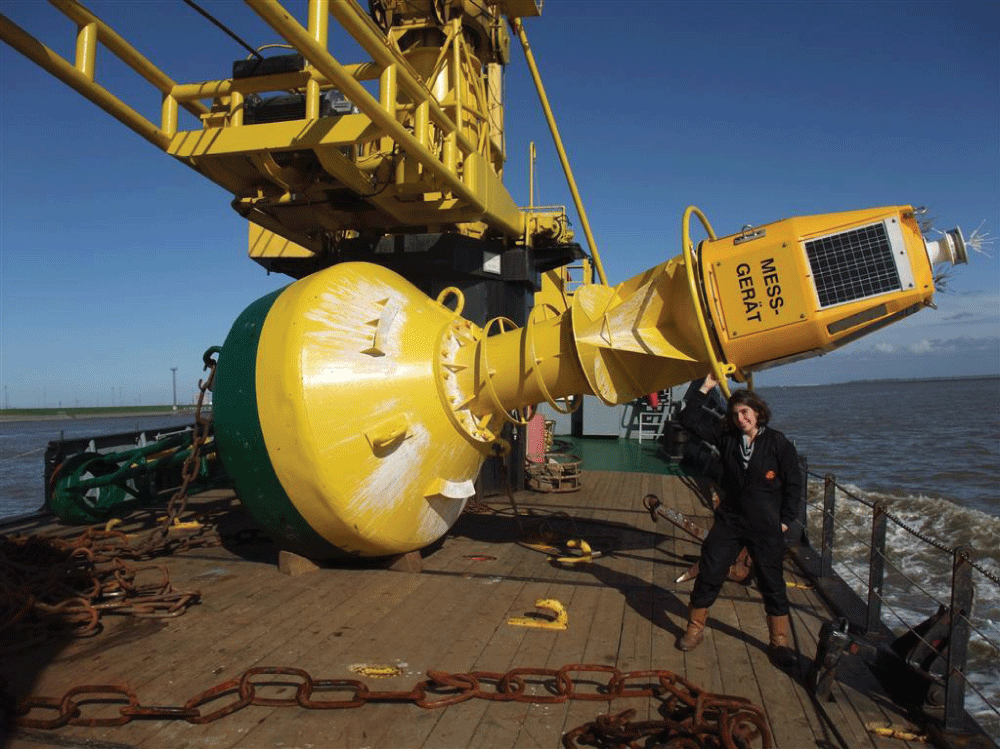
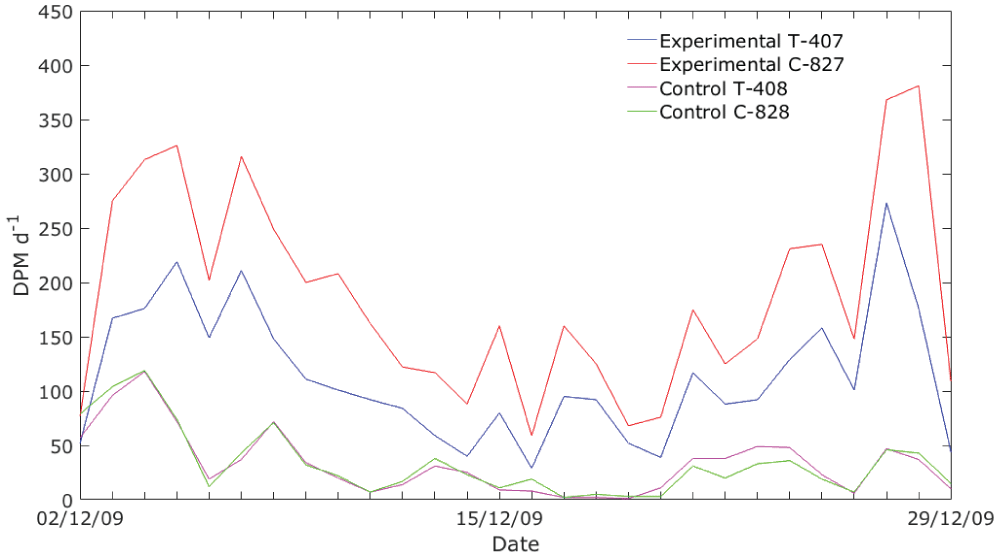
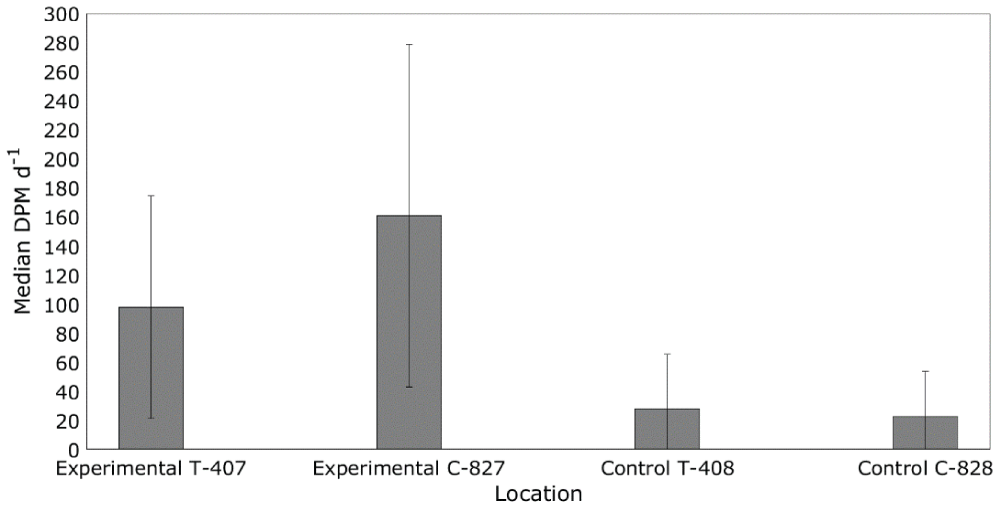

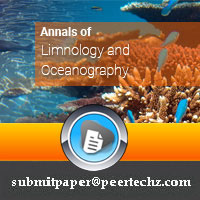
 Save to Mendeley
Save to Mendeley
